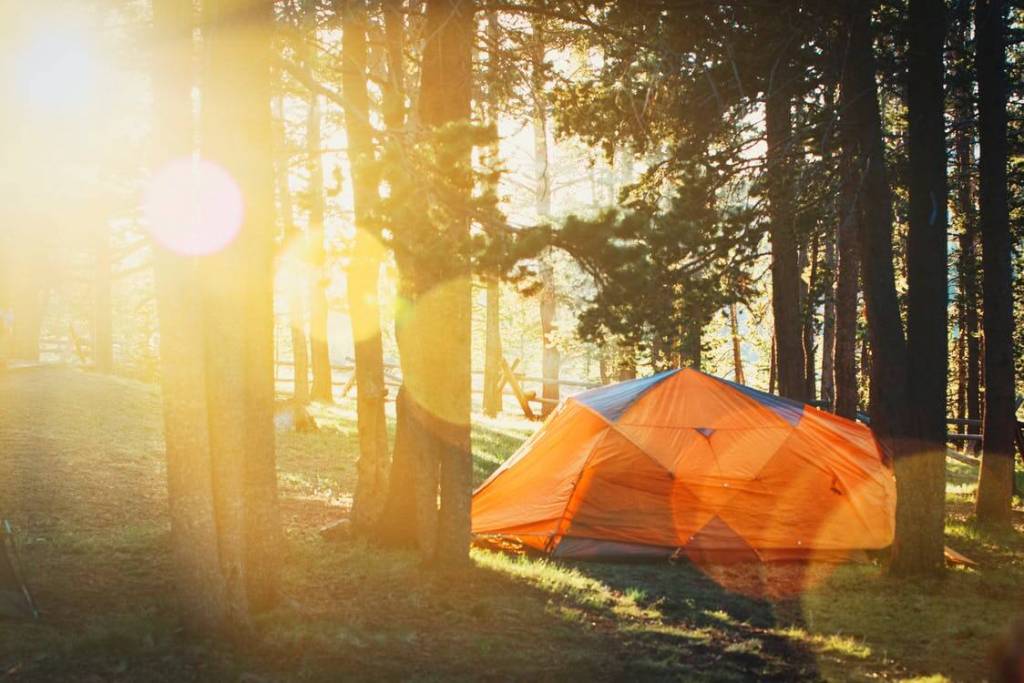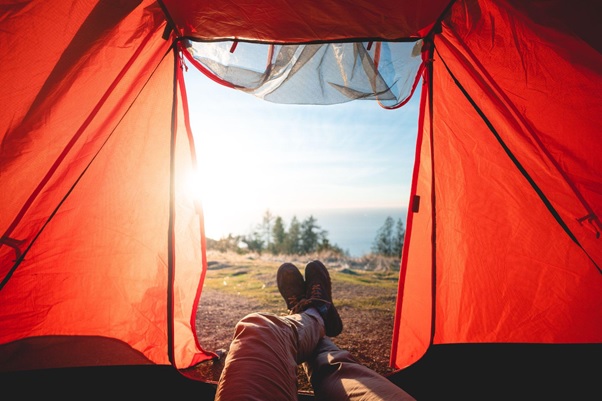We believe that camping can be fantastic all year round; however, each season has pros and cons. Quite often, weather conditions make you haul extra luggage for a more comfortable camping experience. If you prefer to travel light, you need to be creative. While tents for winter camping with stove are a reasonable necessity as they help handle several challenges at a time — cooking, heating, and drying your wet gear, you might not want to bring a bulky generator and air cooler to the campsite in summer. Good news is that there are some tips and tricks that can help you cool your wildlife shelter without electricity.
Why do tents get that hot?
Before we go any further, let’s take a closer look at some possible reasons why your tent gets so stuffy.
Very often, a tent will overheat because you set it up on the spot with no shade or too early in the day. In addition, the situation can get even worse by lack of ventilation. Keep in mind that a tent is very similar to a greenhouse: it will trap the sun’s heat inside.
Did you know that a human can produce up to 1.25 liters of water vapors per day through breathing and sweating? Together with water vapors, we also breathe out carbon dioxide (CO2). Coupled with the humidity, carbon dioxide creates the unwelcome greenhouse effect.
Six ways to cool a tent without electricity
1. Choose the right tent

The material of the tent really matters. Many campers prefer tents made of nylon or polyester because they are more affordable, lightweight, and durable. Still, synthetic materials cannot properly insulate the inside of your tent from the outdoor heat. Therefore, if you want to enjoy a cool tent without electricity, invest in a canvas tent. Although it is more expensive, bulkier, and heavier than nylon or polyester, canvas does an excellent job at maintaining the optimum temperature in the tent, even on the hottest days.
What is more, bear in mind that dark-colored tents like black or navy-blue are poor light reflectors and exceptional heat absorbers, which means that your shelter will significantly heat up during the day. Some tents feature mesh windows and rain flaps you can open to enable air circulation inside during the day.
Beyond color and material, there is one more thing to consider if you don’t want your tent to get too hot: the tent design. While millions of campers particularly love dome tents as they are easy to set up, they lack headroom, which means a greater risk of getting uncomfortably hot on a sweltering day. On the other hand, a spacious 4-person camping tent will allow more room for air circulation and thus is easier to cool down.
2. Go for a shaded spot to camp
Never pitch your tent in direct sunlight. Period. Pick an area that gets natural shade most of the day, from trees, hills, or vegetation. Remember that the sun moves across the sky during the day, and a shaded spot in the morning can become a scorching hell at midday. Still, keeping out of the direct sunlight won’t fully protect your shelter from the greenhouse effect; that’s why look for ways to get rid of the water vapors and carbon dioxide.
Lastly, if it’s possible to set up your tent close to a water source, do it. Even a slight breeze from a lake or river will make a difference. When you put up your shelter, orientate the entrance so that it faces the wind.
3. Start pitching your tent at the right time
Newbies often try to set up camp as early as possible, immediately after getting to the campsite. However, that’s one of the most common mistakes. You hardly ever go to sleep right away upon your arrival, don’t you? Of course, you don’t. So there’s no reason to pitch the tent early and let the sun bake it the whole afternoon, raising the temperature inside. Instead, it’s a good idea to put up your tent later in the day, best just before sunset.
4. Dig a pit
Digging about a two-foot deep in the ground can also help, so pack a shovel. Placing the tent inside a pit with cool soil will make the interior of your tent cooler and more comfortable.
5. Open all the vents
If possible, open vents, doors, and rain flaps to let the air circulate and cool your shelter. Proper ventilation means a lot. If you don’t want any insects to get into your tent, just keep the mesh closed.
6. Bring a space blanket to reflect the heat
Of course, you might go camping in an area without natural shade, for example, a beach. Luckily, there’s a simple and ingenious invention that can help you cool down your tent without electricity: a space blanket designed to reflect the incoming heat. You might need several space blankets to cover your wildlife shelter, but no worries, they are pretty cheap.
Final thoughts
Now you know some smart ways to organize and optimize your tent to provide you with a cool and relaxing shelter in the hot season. However, none of these tricks will work unless you maintain yourself. On the contrary, changing the way you dress and prepare for camping coupled with our tips is more likely to hit the spot.
For starters, bring loose, lightweight, bright-colored clothing made from natural fabrics, for example, cotton or linen, which disperse heat instead of retaining it. If the nights are warm, you can sleep on top of your sleeping bag, covered with a sheet or light blanket. Also, drink a lot of water to prevent dehydration and stay fresh.
